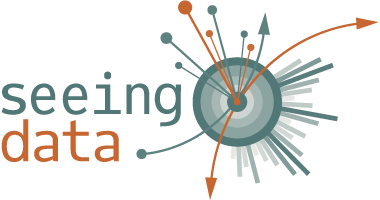Background to Seeing Data
Data are more and more common, and they are assumed to be able to explain our social world. The main way that the public encounters big data is through visualisations. Visualisations are increasingly widely circulated, online, in the mainstream media, and elsewhere.
Yet in spite of our increasing exposure to visualisations, and our reliance on their ability to tell us ‘truths’, we don’t know much about how people respond to them. How effective are they? What might ‘effective’ mean? Are effective big data visualisations possible? What skills and literacies do people need in order to make sense of them? The main goal of Seeing Data is to fill this gap in knowledge by improving our understanding of how people engage with data visualisations.
Seeing Data starts from the idea that data do not just exist; rather, they need to be created. They are constructed by human decisions made during the process of generating the data. But big data are often believed to ‘just exist’ and so big data visualisations are taken as windows onto the world. However, some commentators have highlighted that such assumptions can be dangerous. We need to remember that visual representations of things are not the things themselves.
So if big data are constructed by the ways in which they are generated, and if data visualisations are the main way in which we access big data, then we need to ask questions about the role of data visualisations. We need to explore whether, given these factors, effective big data visualisations are ever possible, and if so, how effectiveness might be measured. In order to answer these questions, more understanding of the reception of data visualisations is needed.
The Seeing Data project addresses this issue. On the project, we generated big data about migration in the UK and combined it with existing data, and then worked with data professionals to visualise that data. We then spoke to the general public about how they engaged with and responded to these and other visualisations.
Through these methods, the project has developed understanding of how people engage with data visualisations. These findings will be shared with data visualisers and the public. The research therefore aims to improve the production of data visualisations and to aid people in developing the skills they need to interact with them.
